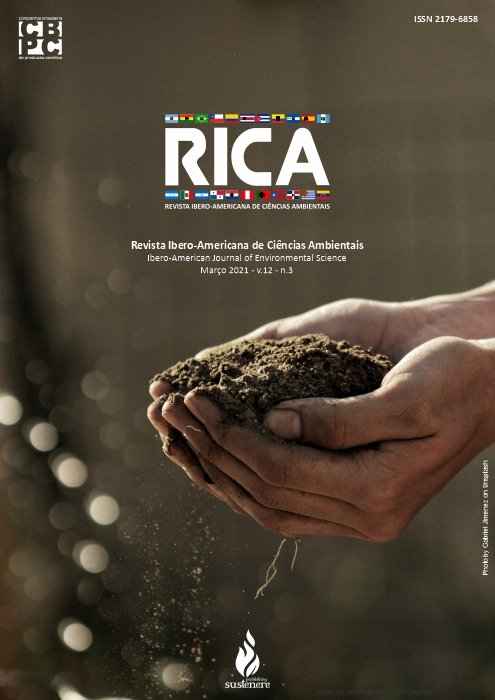Atypical secondary circulation in fluvial-marine meander as a hydrodynamic parameter in an Amazonian aquatic ecosystem
DOI:
https://doi.org/10.6008/CBPC2179-6858.2021.003.0021Keywords:
River Bends, Secondary Flow, River Hydrodynamics, River Morphology, Helical FlowAbstract
Lateral circulation (LC) in river curves is influenced by the morphology of the channels, being relevant in mixing processes that interfere in the variation of water quality. The objective of this research is to evaluate LC from the hydrodynamic flow, curvature and geometry of an Amazonian fluviomarine river. The flow was quantified in a cross-section of the Araguari-Amapá River/Brazil whose geometric characteristics are considered ideal for testing LC in curved stretches (curvature radius ≈5900 m). The measurements occurred quarterly during semidiune tide cycles (12.5h) in June, September and December/2013, March/2014 and 2015, using an acoustic doppler current profiler (ADCP). This stretch presents hydrodynamic disturbance of a tributary close to a lateral expansion of the canal, which ranges from 850 to 1750 m and, later, from 1750 to 2900 m. The hydrodynamic and geometric profiles were processed in the Matlab and Tecplot software, allowing to evaluate and compare the pattern of the current lines of the LC-form flow with similar information in the literature. The results indicated absence of a typical helical pattern. Thus, at the ebb tide the current lines flow from the outer to the inner margin descending from the surface to the bottom. At the flood tide, the opposite occurred, with current lines flowing from the inner to the outer margin in ascendancy. Statistical hypothesis tests showed that physical factors beyond curvature (upstream river, later geometric expansion, tidal phases and seasonality) restricted the formation of the helical pattern expected in the study section. We conclude that, despite these factors, the intensity of the secondary flow was more influenced by the tidal phase, where the lowest Vy((Transverse)/Vx(Longitudinal) value occurred in the ebb phase (≈ 0.091) and the highest in the flood phase (≈ 0.169). Therefore, LC varied in the range [≈10% ≤ CL ≤ ≈17%], representing a considerable physical prompter of mixing in the flow, even in rivers with relatively low curvatures such as that presented in the Araguari River in the present study.
Downloads
Downloads
Published
Issue
Section
License
The CBPC - Companhia Brasileira de Produção Científica (Brazil CNPJ: 11.221.422/0001-03) the material rights of the published works. The rights relate to the publication of the work anywhere in the world, including rights to renewals, expansions and dissemination of the contribution, as well as other subsidiary rights. All electronically published works may subsequently be published in printed collections under the coordination of this company and / or its partners. The authors preserve the copyright, but are not allowed to publish the contribution in another medium, printed or digital, in Portuguese or in translation.









